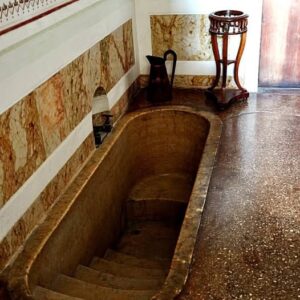In England, a fascinating discovery has shed light on ancient burial practices and raised intriguing questions about the life of a young Anglo-Saxon girl. The find in question is a Roman wine goblet, commonly referred to as the Scremby Cup, found in the burial site dating back 1,500 years.
This 1,800-year-old vessel, found with traces of pig fat, has sparked curiosity among archaeologists and historians alike. The presence of pig fat in the cup suggests various possible uses such as food consumption, cosmetic applications, or even medicinal treatments for parasites.

The burial site, which contained the Scremby Cup along with the remains of the young Anglo-Saxon girl, presents a mystery that researchers are eager to unravel. The significance of the cup being buried with the girl raises questions about her identity, status, and the cultural practices of the time.
By examining the contents of the cup, researchers hope to gain insights into the daily life and customs of the Anglo-Saxon people. The discovery underscores the importance of artifacts in understanding ancient societies and shedding light on their beliefs and traditions.
The presence of the Scremby Cup in the burial site serves as a tangible link to the past, offering a glimpse into the lives of those who lived centuries ago. As further research is conducted on this remarkable find, more details are expected to emerge, providing valuable information about the girl and the society in which she lived.
In conclusion, the discovery of the Scremby Cup in the Anglo-Saxon burial site is a testament to the rich history and cultural heritage of England. The vessel, with its contents of pig fat, adds a layer of intrigue to the story of the young girl laid to rest with it, inviting us to delve deeper into the mysteries of the past and uncover the secrets of ancient civilizations.





